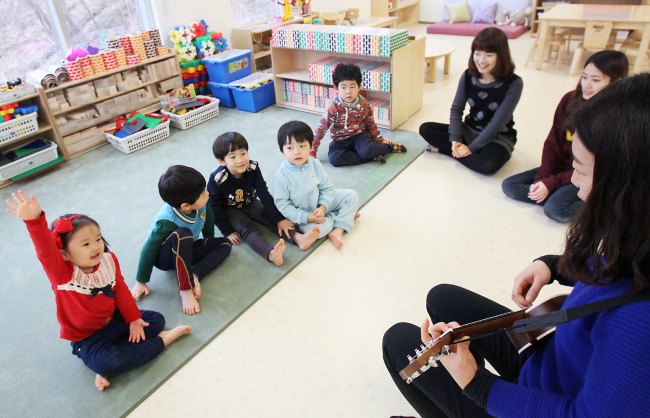
South Korea’s childcare leave applies to parents, both mothers and fathers, with children who are under eight years of age. (Image: Kobiz Media)
SEOUL, Jun. 26 (Korea Bizwire) — Childcare leave is no longer the exclusive domain of female public servants, with paternity leave among fathers working in the public sector on the rise.
According to recent statistics, over 20 percent of the central government workers who took childcare leave were fathers, with increases also noted for employees of local governments and regional education offices.
South Korea’s childcare leave applies to parents, both mothers and fathers, with children who are under eight years of age.
Though restricted to those working in the public sector, the recent trend still goes to show child care is no longer a women’s job amid growing dual-income families.
The Ministry of Personnel Management says the number of male public servants working in the 43 departments of the central government has been steadily rising, as figures from last year show two in ten workers on childcare leave are male.
The figures grew from 2013 when paternity leave accounted for just over 13 percent, which then experienced a slight increase the following year, reaching 14.4 percent.
In 2015, the figure went up to 15.8 percent before it reached a record high of 20 percent last year.
The recent jump in the number of fathers on paternity leave is thanks in part to civil servant law reforms enacted in 2015 that made it possible for male public servants to take childcare leave for as long as three years.
However, not many fathers stay off work for longer than a year.
“When you take childcare leave for longer than a year, it’s hard to get back into the swing of things when you are back at work. As it could also have a negative impact on future promotions, most fathers don’t take paternity leave for longer than a year,” a local government official said.
A similar trend was observed among those in education administration and government affairs, as last year’s figures show nearly 10 percent of those who took childcare leave were male.

Childcare leave is no longer the exclusive domain of female public servants, with paternity leave among fathers working in the public sector on the rise. (Image: Yonhap)
The same trend however didn’t apply to those working in the central government departments however, as those in local governments aren’t encouraged to use paternity leave as much.
Statistics show the number of male workers taking paternity leave in local governments only increased 3 percent from 2014 to 2016.
M.H.Lee (mhlee@koreabizwire.com)






